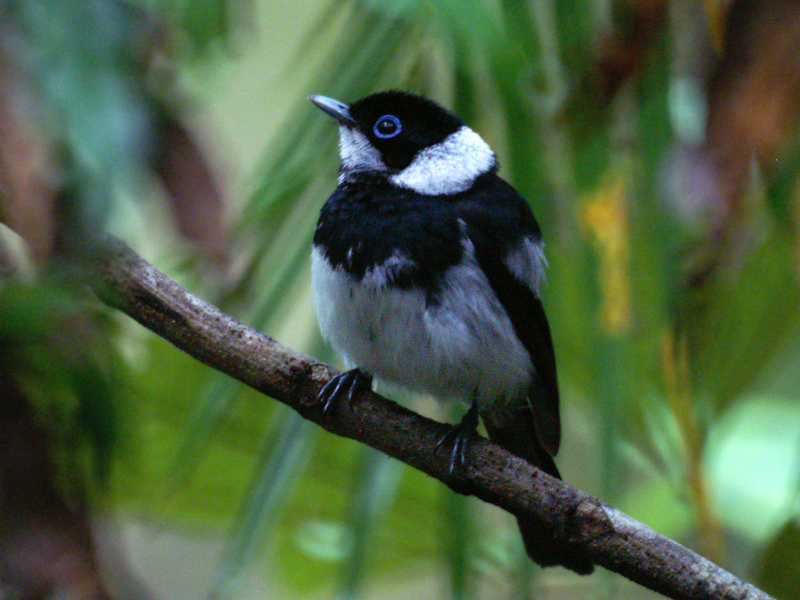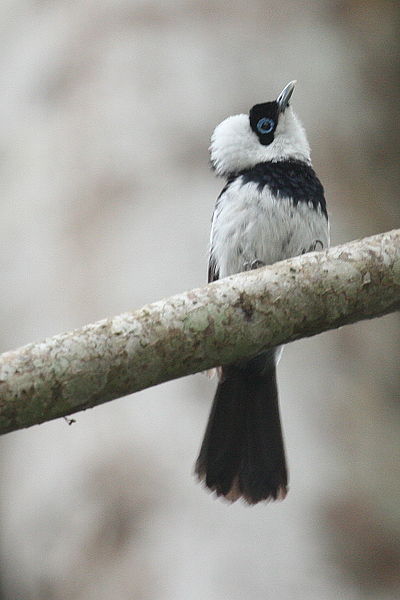Colours
Distinguishing features
The plumage is sexually dimorphic. The upperparts and head of the male are black, as is the tail, and the wings are brownish-black with white scapulars (which shows as a white crescent across the back when folded). The collar, which is erectable, is white, and it joins through the neck with a white throat. The breast-band is black, and the belly and underside are white. In the female the white on the throat and collar is less distinct and covers less area, and the collar is incomplete around the neck.
The eye is black, and is surrounded by a blue coloured eye-ring, which is less distinct in the female. The bill is blue-grey, and the legs are black. Immature birds look like females but with duller plumage, no blue in the eye-rings, and a horn-coloured bill. Like other members of the genus it has long hind-toes and claws, and in general the size and shape of the feet resemble those of the Australasian treecreepers, and the feet are used for feeding in the same manner on the trunks of trees. (Wikipedia)
Size
- From 14 cm to 15 cm (Length of specimen)
Wingspan
- Wingspan data is not yet available.
Synonyms
Distribution
Distribution and habitat preferences
The Pied Monarch is found in tropical forest edge habitats and secondary growth in coastal north eastern Queensland, Australia, from Cooktown to Ingham. It ranges from sea-level up to 900 metres. It also occurs in palm-vine scrub, gallery forest and along rivers. The species is mostly non-migratory, but some birds disperse to the Eucalyptus woodland in the Atherton Tableland during the winter. (Wikipedia)
Diet
It is insectivorous, with beetles (Coleoptera) and moths and butterflies (Lepidoptera) being recorded in its diet. It is usually seen as singles or pairs and small groups (of three to five birds, which may be family groups).
Within the forest they usually feed at the mid level, and rarely close to the ground. One foraging method typical to the genus is to climb up trunks and the larger branches in the manner of a treecreeper (Climacteris) and probing the bark and lichens, but they also hawk prey from the air. (Wikipedia)


